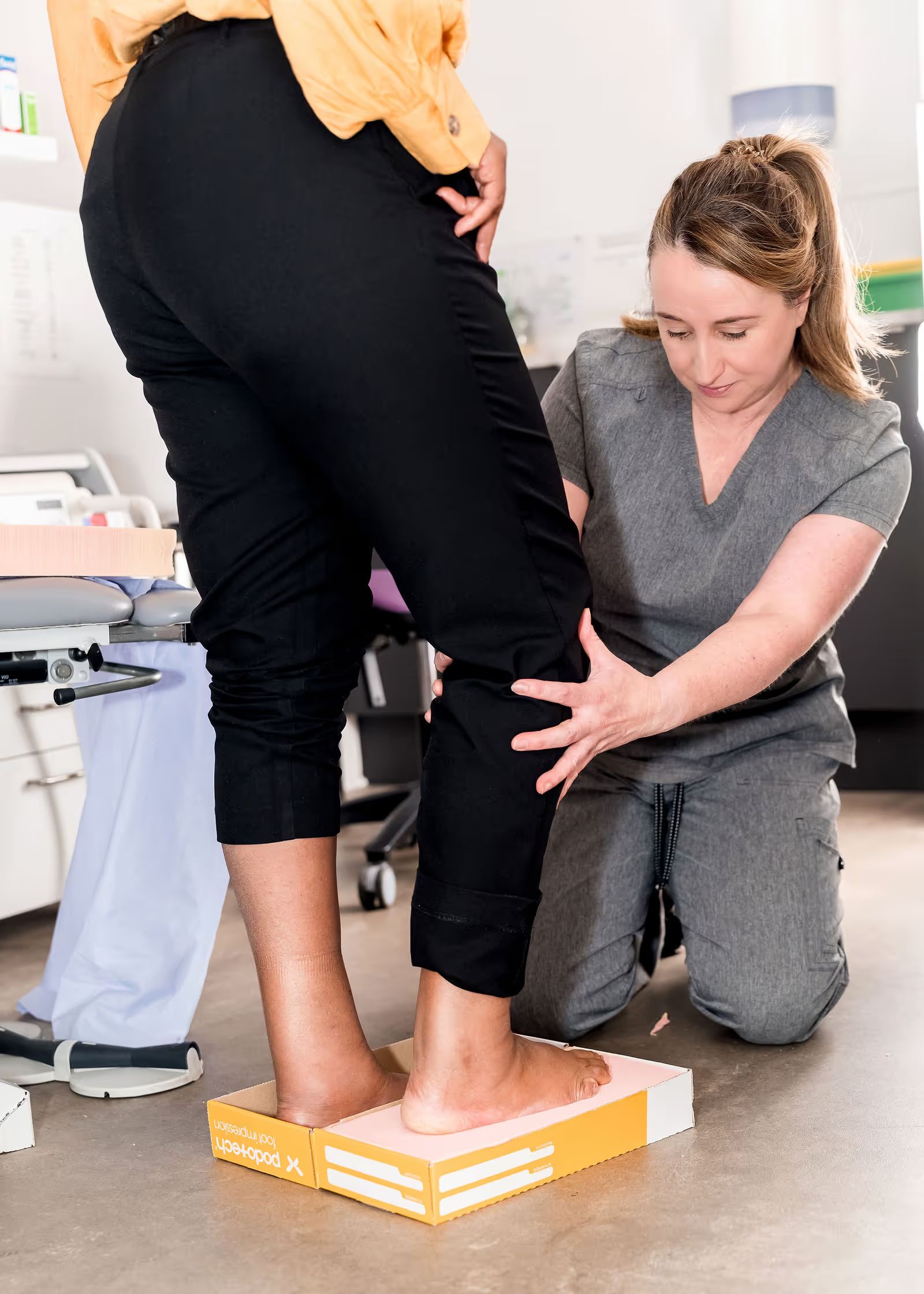Biomechanics
Podiatric biomechanics involves not only the assessment of the structure, alignment and function of the feet and legs but also the whole body. The foot is part of the complex systems of the body and is completely unique to allow us to walk upright.
Through a series of complex joints and muscle function, it has adapted to walk on almost any surface from rough uneven ground to flat hard smooth surfaces. However, this hard flat surface causes a low-grade repetitive movement that subjects the body to many forces that cause injury.
The average person takes an average of 10,000 steps a day with forces acting on the foot of up to twice the body weight. The majority of patients have a low arched (pronated) foot type, and combined with muscle imbalance, activity levels, and footwear can all lead to pain and injury.
The use of specifically designed and personally moulded insoles (orthosis) can help to control the way in which we function. However, training programme, footwear modification, muscle function and balance (strength/flexibility) may also need to be modified to help improve function.
This section outlines the process to biomechanical evaluation and gait analysis with specific conditions and treatment options.
Orthosis (orthotics)

Chase Podiatry only provides custom-made bespoke orthosis we make in our dedicated orthosis lab, we do not use or modify off-the-shelf devices.
Orthosis, also referred to as orthotics, often take up to six weeks to adjust the foot function and feel comfortable, and are not a quick fix. You should commence wearing for an hour or so a day and gradually increase until you can wear them all day. They may need minor adjustments to make them fit correctly.
You may notice a number of things which are usually temporary:
- There will be a sensation of a lump under the arch of your foot. This is unavoidable but as long as it does not feel so large as to cause excessive discomfort then it will resolve.
- There will be a tendency for you to feel that your heel is raised and that you are coming out of the heel of the shoe as you walk. This is because your foot does not flatten and turn out quite so much as you walk. This causes the heel to come off the ground slightly earlier with each step and so causes the feeling of the foot being looser in the heel of the shoe. This usually goes away in a few weeks, as your calf muscles and other tissues adjust. This is the reason you may have had advice on calf stretching exercises.
These devices will usually last up to a few years before they need to be replaced depending upon the useage. If you have a problem or need replacement devices then please contact us for a review.
The casts provided to you can be used to make new orthosis. Additional orthosis can be purchased if you have your casts, the price can vary and is listed on our treatment plans.
Your orthosis will be guaranteed for twelve months from fair wear and tear. Sports orthosis that are used for marathon or long distance running can only be guaranteed for six months.